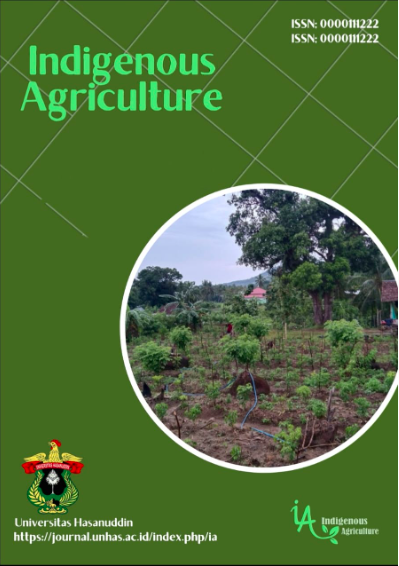Main Article Content
Abstract
The cattle-oil palm integration system refers to a farming approach that involves the integration of the plantation sub-sector and the livestock sub-sector. Can be achieved by utilizing the vacant area beneath oil palm plants to graze beef cattle. The combination of oil palm and cattle production systems has significant social, economic, and ecological standpoints. The program strategy for establishing a cattle-oil palm integration system highlights the importance of institutional involvement in supporting a priority program that has achieved success in multiple areas. The study was conducted in the Tanah Bumbu District in the South Kalimantan Province. The place selection was conducted via purposive sampling, considering its potential as a prototype for combining cattle and oil palm development. This study employs Interpretative Structural Modeling to categorize local institutions into four quadrants: dependent, linked, autonomous, and independent. Engaging three specialists in delineating the entities involved in the development of the cattle-oil palm integration system, specifically the central government, regional government, community, business sector, and universities. The research findings indicate the presence of 17 active institutions, distributed as follows: 2 in the independent quadrant, 9 in the linkage quadrant, 6 in the dependent quadrant, and none in the autonomous quadrant. Thus, the essential requirements for enhancing this establishment have been delineated. The institutional strengthening strategy was devised using a three-step approach, which involved the establishment of small farmer corporations, the establishment of autonomous cooperatives, and the revitalization of Indonesian planters and breeders associations. We analyze and subsequently include multiple entities that contribute to the enhancement of individual empowerment. The suggested approach for enhancing institutional development necessitates the cooperation of cooperatives, smallholder groups, and palm oil mills, with the assistance of regulatory authorities, financial institutions, and input suppliers, through mutually advantageous partnership initiatives.
Keywords
Beef self-sufficiency, Local institutions, Palm oil sustainability, Smallholders
Article Details

This work is licensed under a Creative Commons Attribution-ShareAlike 4.0 International License.

